Heatwaves across south-east Australia continue to break records. New Orleans is still searching for solutions to its flooding issues following Hurricane Katrina in 2005. Researchers look for global lessons in the aftermath of extreme weather events to see how cities can respond to environmental challenges ahead.
In August 2005 the flood protection system around the city of New Orleans in the United States failed, and Hurricane Katrina flooded 80% of the city. More than 130,000 homes were destroyed, and despite many people returning to the city and renewed development, many properties are still abandoned due to the massive flooding that took place. More than a decade later, the city and its residents are still dealing with the storm’s aftermath and searching for integrated solutions to flooding risk.
Like many coastal cities, New Orleans was developed on drained swamplands. That helps explain many of the problems the city continues to face: sinking land and vulnerability to storm surges, as well as complex problems caused by ageing infrastructures designed to keep the city dry. The city is only now beginning to think about the.
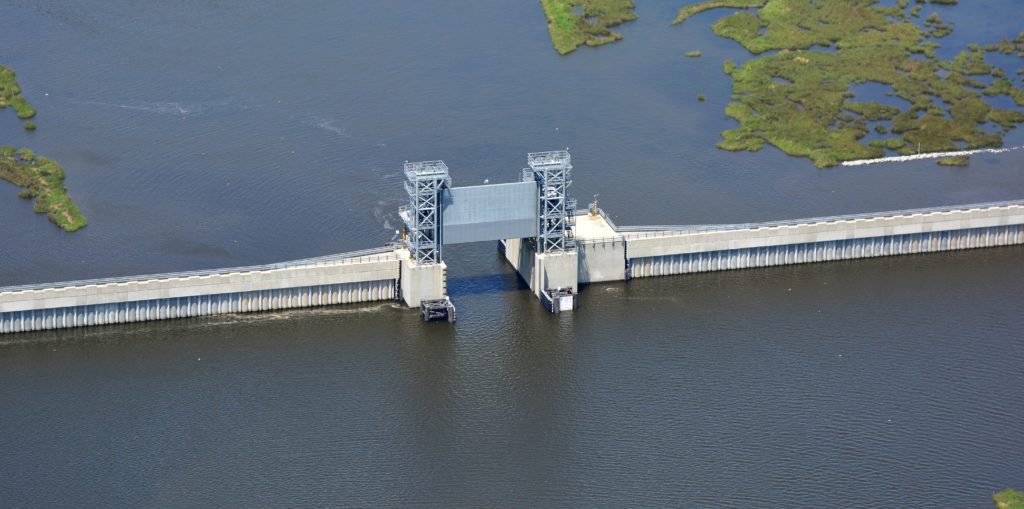
A gate open on a new storm surge barrier outside New Orleans. Storm surge barriers are one example of engineering solutions for urban resilience. These kinds of solutions need to be complemented by scientifically sound ecosystem-based approaches. Photo credit: US Army Corps of Engineers. Photo: US Army Corps of Engineers.
In Australia, Melbourne faces a different challenge. The city has been plagued by heatwaves that have claimed hundreds of lives in the most extreme years. As climate is changing and heatwaves are becoming more frequent, the city is using urban trees to bring down temperatures, relieving stress on residents and perhaps even saving lives.
The two cities provide important insights into how engineers and planners can harness natural processes to better equip urban environments to cope with shocks and change: using ecosystems to adapt to serious climate-driven challenges.
New Orleans and Melbourne are far from the only places where ecosystem-based solutions are being used. Climate change is unfolding globally, putting city planners across the globe to the test. As cities begin to experiment with ecological design and planning as solutions to climate stress, it is important to make sure that the work is based on key ecological principles.
The notion of “resilience” has emerged as an overarching framework in urban development, advocated by governments, businesses, communities, and philanthropies. However, many of these actors approach their work with different definitions or understandings of resilience.
Natural systems in cities are complex, dynamic, and – at times – unpredictable. Incorporating ecological principles into discussions about resilience can help cities tackle challenges of extreme weather and climate change, as well as social issues regarding infrastructure, housing, employment, and healthcare. For instance, new green infrastructure technologies and water management strategies are growing industries that could create job opportunities, alleviate flooding in vulnerable neighbourhoods, and provide publicly accessible green space simultaneously.
Strategies for urban resilience
The Rockefeller Foundation launched the 100 Resilient Cities (100RC) programme network in 2013 to help cities around the world respond to the physical, social, and economic challenges emerging in the 21st century. The 100RC network has an important role to play in shaping the future of cities through the use of nature-based interventions, such as the restoration of coastal wetlands or tree-planting initiatives.
Last year, 100RC held a network exchange eventin Melbourne bringing together representatives from the United States, Indonesia, South Africa, and Australia. The exchange explored the roles that natural systems can play in supporting the resilience of cities and, in turn, what role 100RC could play in supporting local biodiversity.
The event brought together natural scientists and municipal leaders interested in developing initiatives and projects that utilise natural processes to generate benefits for the public. At the meeting it was clear that there are important differences between the urban resilience thinking in the 100RC network and social-ecological resilience thinking. Connecting these perspectives may help cities tackle challenges ahead.
“the capacity of individuals, communities, institutions, businesses, and systems within a city to survive, adapt, and grow no matter what kinds of chronic stresses and acute shocks they experience”. This definition draws on an everyday meaning of the term: the capacity to recover quickly from difficulties.
This meaning is in line with psychological definitions, where resilience is understood as the ability of people to cope with and adapt to adversity. In these definitions, resilience is always a good thing; it helps people and communities maintain well-being – good mental and physical health – in the face of shocks and stresses.
Ecology and resilience
Urban social-ecological resilience has been the focus of 20 years of academic research, and provides a useful basis for 100RC nature-based interventions in cities.
Another common understanding of resilience is the one used in engineering: the ability of a material to spring back into shape after some kind of disturbance. Resilience is, in other words, a property of a system – it can be a good thing or a bad thing depending on whether the material or system is considered desirable.
This understanding has important limitations that today’s urban resilience advocates should clearly understand. Engineering resilience tends to miss two important dynamics. First, engineering resilience prioritises the status quo – the goal is to return a system back to its previous state after a disturbance, no matter how problematic, vulnerable, or unjust that condition may have been. Second, natural systems rarely function like engineered systems. There are layers of complexity to ecosystems, even in cities, that need to be unpacked.
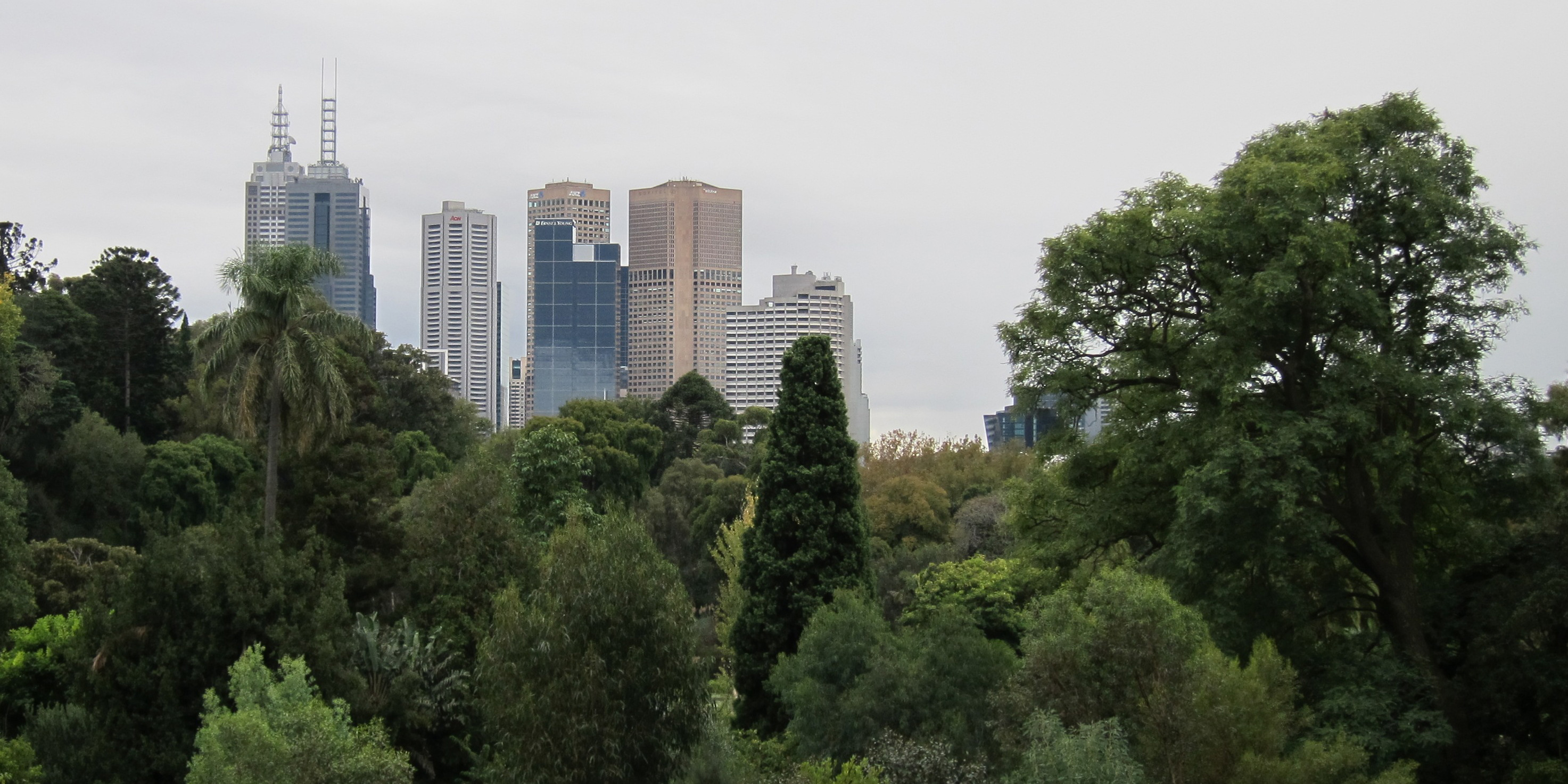
Social-ecological resilience thinking takes this a step further, defining resilience as the capacity of a system to deal with change and continue to develop. This definition emphasises the ability to adapt in the face of change and disturbance, or to shift into something new and different – to transform out of something undesirable.
Ecological systems and the societies that rely on them are complex and can function and be organised in many different ways. These systems are not naturally configured in pre-ordained ways, rather they are shaped by different processes and disturbances, such as fires, droughts, and floods, or human activities such as urbanisation, agriculture, fishing, and deforestation.
Research in the field has developed important insights into how systems shift from one state to another, and the interventions that can help or hinder these shifts. Studies have explored the resilience of both desirable and undesirable states, such as the melting of the Arctic sea ice, or the collapse of cod fishing in the North Atlantic, where a highly productive fishery transitioned to a much less productive system after decades of overfishing.
Cities around the world experience regime shifts caused by different things. Take species losses and invasions for example: the introduction of certain fungi caused the Dutch elm disease epidemic which destroyed millions of trees across North America and Europe in the 20th century. Other causes of regime shifts include water and air pollution, elevated temperatures due to the urban heat island effect, and changed water flows through paving and urban drainage systems. Many of these examples are found in a database on regime shifts, developed at the Stockholm Resilience Centre in Sweden.
Insights from social-ecological resilience research can add value to programmes such as 100RC. For example, understanding diversity and redundancy in ecosystems, the importance of knowing the resilience “of what, to what, for whom”, and the mismatch between ecological and political boundaries could provide a basis for strengthening urban communities and help prevent undesirable regime shifts.
Incorporating these insights into the planning of nature-based solutions in cities could improve the long-term success of programmes like 100RC, as they can help identify shocks and pressures being responded to, what the desired future should look like, the people who will benefit from a change, and the design and management of actions to maintain or increase diversity and redundancy in ecosystems.
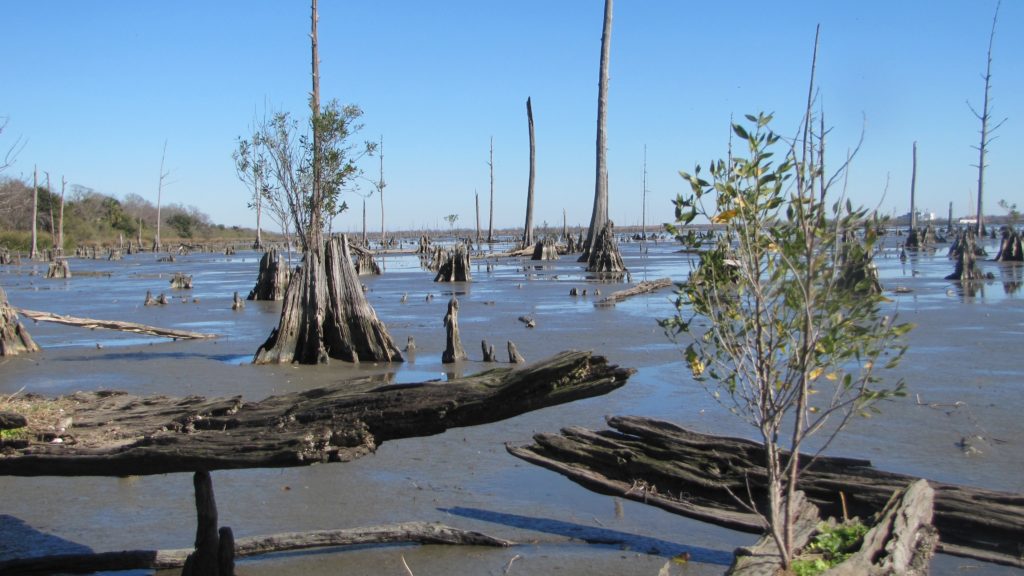
Regime shift in New Orleans’ coastal forest. A salt-tolerant shrub grows in the dead stump of a freshwater cypress tree. Copyright: J. Lewis.
Buffering for functions in cities
In 2015, Oonsie Biggs – of the Stockholm Resilience Centre – and her colleagues conducted a synthesis and compiled seven principles for building resilience in social-ecological systems, such as cities. The first principle emphasises the importance of diversity and redundancy.
Ecological scientists distinguish between different kinds of diversity and redundancy. “Functional redundancy” is one concept; it means that different parts of an ecosystem play similar roles. In New Orleans and coastal Louisiana, while cypress forests buffer storm surges and prevent erosion, they cannot cope with severe saltwater flooding. Black mangroves provide a similar buffering function but are also saltwater adapted and might see their range expand as temperatures rise and the sea encroaches. This redundancy provides an insurance of sorts: if one part of the system is lost, other parts can continue to provide the same functions. This reduces the risk of drastic change, making the system more resilient.
The related concept of “response diversity” exists when various parts of a system respond differently to shocks and stresses. Melbourne’s rising temperatures are leading to the loss of some cool-climate trees, while other sub-tropical trees are thriving. This diversity of responses makes it possible for a system to adapt to change, or recover from stress. Like redundancy, this increases the chance that a system continues functioning despite stresses and disturbances
Sudden shocks, like hurricanes or heatwaves, can lead to catastrophic losses in social-ecological systems. Slow changes such as global climate change can also lead to dramatic losses over time. Local species could become extinct, species from other places could move into the landscape, or completely new species might evolve. As such changes occur, functions like pollination and the processes by which organic substances are broken down can be disrupted or maintained depending on the system.
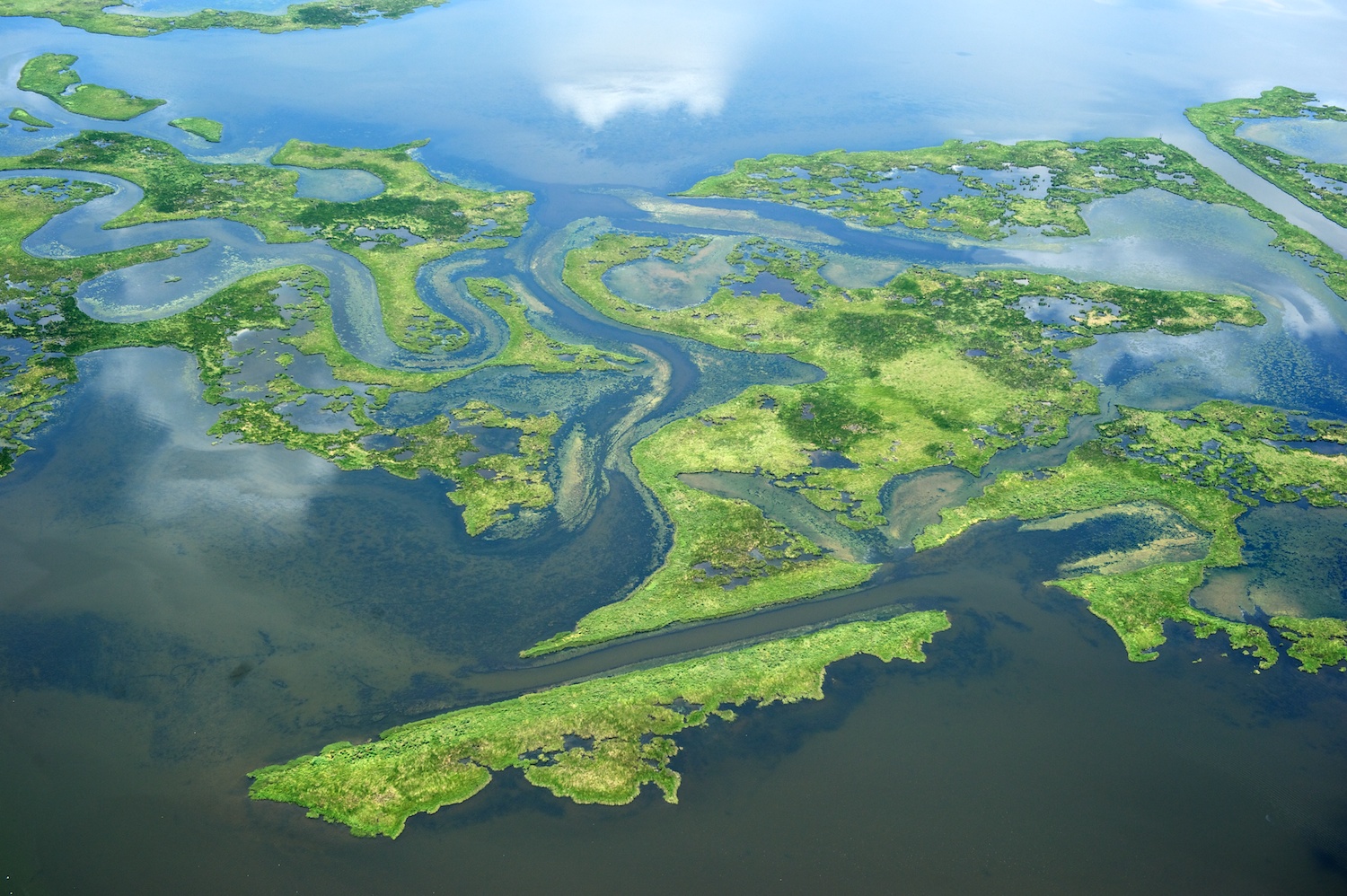
Verdant wetlands southeast of New Orleans in the Missisippi River delta. Photo: J. Davidson/Flickr.
Without a solid scientific understanding of the ecological systems in cities, policymakers are not aware of what options exist for sustaining and expanding environmental benefits and ecosystem services, such as floodwater control or temperature regulation. To overcome this, more forums for knowledge exchange between ecological scientists and urban managers are needed, as is an understanding that the two groups have something important to offer each other.
Understanding the links
The links between people and ecosystems are complex and not always easy to see. Understanding which ecological functions are affected by urban development, especially in sensitive and dynamic systems like coastal wetlands, is key. But equally important is understanding who are affected as these functions disappear or change, or as places become inaccessible to the general public.
Interventions to help cities respond to challenges are more likely to succeed when the targets (e.g. flood-prone areas), the threats (e.g. storm surges), the people who will benefit (e.g. nearby residents), and the tools (e.g. mangrove planting) are considered. Without this clarity there is a risk of unintended outcomes. For example, not identifying the people who might benefit can lead to the displacement of locals, or increased social injustice. Before interventions are planned it is important to ask “resilience of what, to what, and for whom”.
Interventions that target a small part of an ecosystem risk failing or having unintended consequences further down the line. For example, planting trees may help to cool a city, but may also increase the risk of wildfires in some places, or reinforce existing social inequalities. Also, ecological boundaries often do not match political ones, for example a river may flow through several municipalities or cities. This can require collaboration between political jurisdictions to manage whole ecosystems.
New Orleans and Melbourne have shed light on some of the contradictions in the different ways of thinking about resilience

Historical and projected land loss in coastal Louisiana, 1932-2050. Photo: US Geological Survey.
Muddy waters of Louisiana
The coastal ecosystems in the vicinity of New Orleans are suffering the highest rate of land loss in the world, due to dams and dredging, oil and gas extraction, and saltwater intrusion.
These ecosystems were historically freshwater-dominated wetland forests that helped to dissipate storm surges, complementing the city’s traditional flood protection system. However, since the 1960s, many of these wetland forests have been transformed into open water and salt marsh, by dredging, saltwater intrusion, and subsidence.
These waterways and patchy salt marshes are, in many respects, quite resilient. They can themselves withstand storms and other disturbances. But these landscapes do not protect the city and its people as they once did. An ambitious plan developed by Louisiana and its partners now seeks to transform these marshes back into robust, freshwater-dominated ecosystems.
Resilience planning and advocacy in Louisiana typically highlights the importance of using river diversions, which are massive gated structures in the banks of the Mississippi river, to divert freshwater and sediment into the region’s marshlands. Diverting sediment is intended to build new land to protect cities and critical infrastructure from flooding threats. On the surface, harnessing natural systems to build a protective buffer zone around a major coastal city embodies urban resilience at its best.
But here is where resilience – if viewed only as a good thing – becomes troublesome. This scenario embodies a mismatch in scale between ecosystems and political jurisdictions. “Making New Orleans resilient” is a project that extends beyond the city limits, drawing in different social groups and experiences that do not necessarily see themselves as part of the city.
For instance, the fragmented brackish marshes surrounding New Orleans are home to important fisheries and other wildlife resources. Diversions of fresh Mississippi river water can disrupt fisheries and affect industry and communities. Urban resilience, like any planning agenda, involves trade-offs.
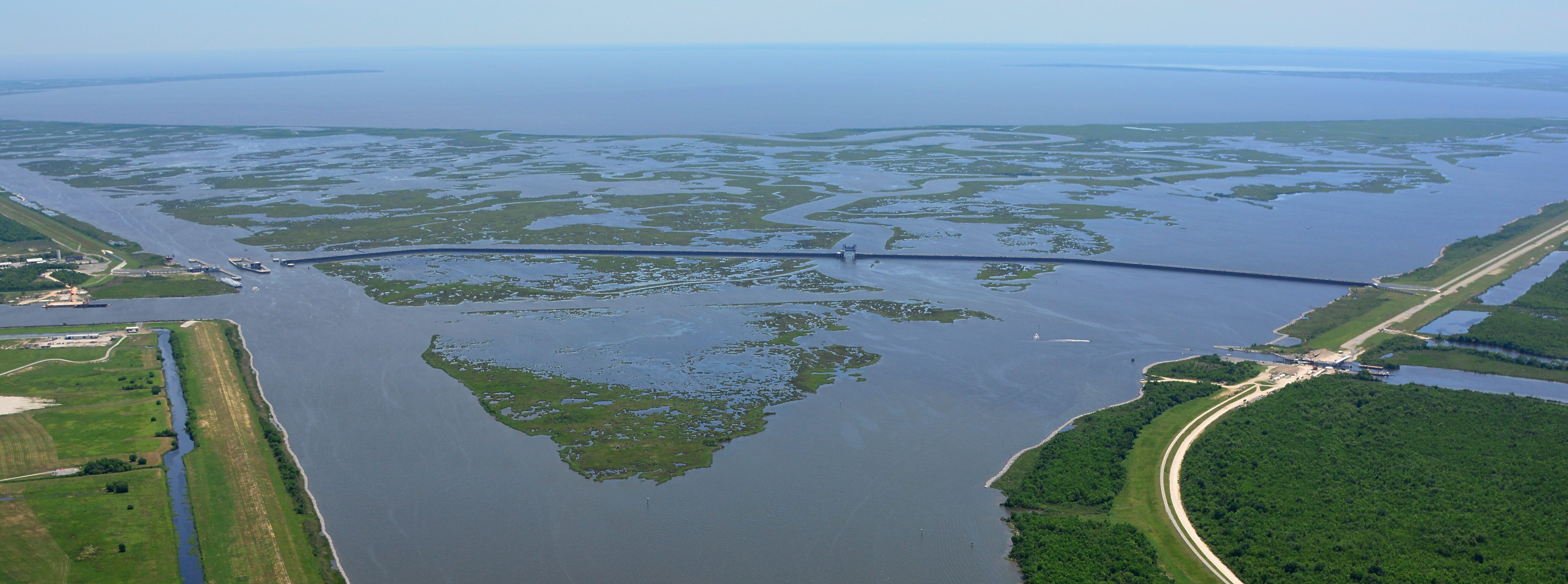
If the starting point for seeking resilience in the region is “How can we make New Orleans more resilient to storm surges?” then the fact that the marshes surrounding the city support coastal livelihoods might be overlooked.
No single solution or policy framework can simultaneously address how all of these activities impact the resilience of the region. They can only be tackled by being specific: resilience of what? to what? for whom? That means asking difficult questions about social power among the actors involved.
In light of the current sea-level rise projections of at least 1 metre by 2100, and the increasingly dire condition of Louisiana’s coastal ecosystems, can all of these economic and infrastructural activities continue indefinitely? Can they be “balanced”? It is more likely that very difficult decisions will need to be made regarding what the future geographic extent of Louisiana’s coastline will look like, and which industries it will support. If the approach to resilience is too narrow, or too general and abstract, it will not help empower communities to cope with these coming changes.
Escaping the heat in Melbourne
During a drought lasting through the first decade of this century, thousands of residents in Melbourne died in heatwaves that were worsening both with climate change and the impact of the urban heat island effect.
The city tried to promote resilience to drier and warmer conditions through reduced water consumption, particularly external water use in parks, streets, and gardens. In response to the combined effect of drought and reduced irrigation, many urban trees began to die.
However, towards the end of the decade, healthy and thriving trees were identified as a useful way to reduce heat stress for residents and adapt the city to increasing temperatures caused by urban heat and global climate change – building resilience in the city through nature-based interventions. Melbourne introduced an Urban Forest Strategy and a large tree renewal and planting programme that aims to double the canopy by 2040.
The programme aims to increase the city’s resilience through diversity, reducing the reliance on a few dominant tree species, and through increasing redundancy, as more tree species will provide the same functions: shade, beauty, and habitat for urban wildlife.
The increasing temperatures in Melbourne were also recognised as placing stress on the urban forest, leading to a feedback loop in which temperatures would increase as the forest disappeared. Research was conducted at Australia’s Clean Air and Urban Landscapes Hub to better understand how particular tree species might respond to increasing temperatures, influencing the selection of new trees being planted to increase the resilience of the urban forest.
Holistic urban resilience strategies are grounded in an understanding of not only what is immediately at stake for urban residents, but also the longer-term ecological dynamics involved. Simply investing in urban trees was not enough. Ecological expertise and highly specific information was necessary to develop a strategy that would allow the urban forest to survive and to continue providing desired functions in a changing climate.
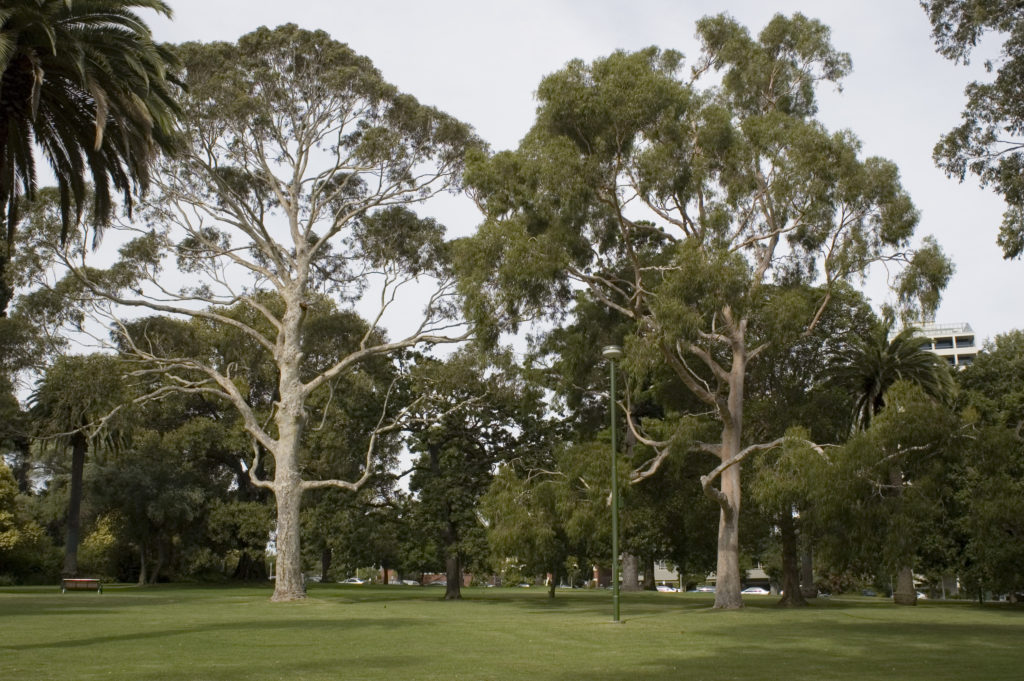
Forested park in Melbourne. Copyright: D. Kendal.
Redefining resilience of cities
There is no single blueprint for what is desirable in a city. Instead, it depends on the goals and needs of nature and people. While what is desirable is case-specific, certain ecological functions and qualities provide the basis for all human activity.
Much of the urban resilience conversation has up until now been driven by large-scale, elite institutions. Recent global declarations on the future of sustainable urban development, for example the New Urban Agenda endorsed by the United Nations General Assembly, call for participatory processes to build more inclusive cities. Understanding how different social groups and communities understand ecological change, and the appropriate measures to respond to that change, is critical for the urban resilience agenda to constitute a meaningful and adaptive policy response.
Cities across the world face rapid ecological change and the looming uncertainties of climate change. Urban governments are seeking new perspectives and partnerships to adequately respond to changes, and resilience has expanded from a perspective in ecological science to an emerging planning paradigm for cities.
Framing environmental management in cities in the language and practice of resilience opens new avenues for both scientific practice and urban policymaking. And when city officials work to bring resilience thinking into environmental management, the science of social-ecological resilience should be emphasised.
The resilience framework has quickly become a high-profile feature of urban planning discourse, catalysed in part by the efforts of 100RC and related programmes. As the resilience perspective grows and becomes better developed, city planners, decision-makers, resilience advocates, and the scientific community need to engage in meaningful exchange and collaborative learning.

Comments